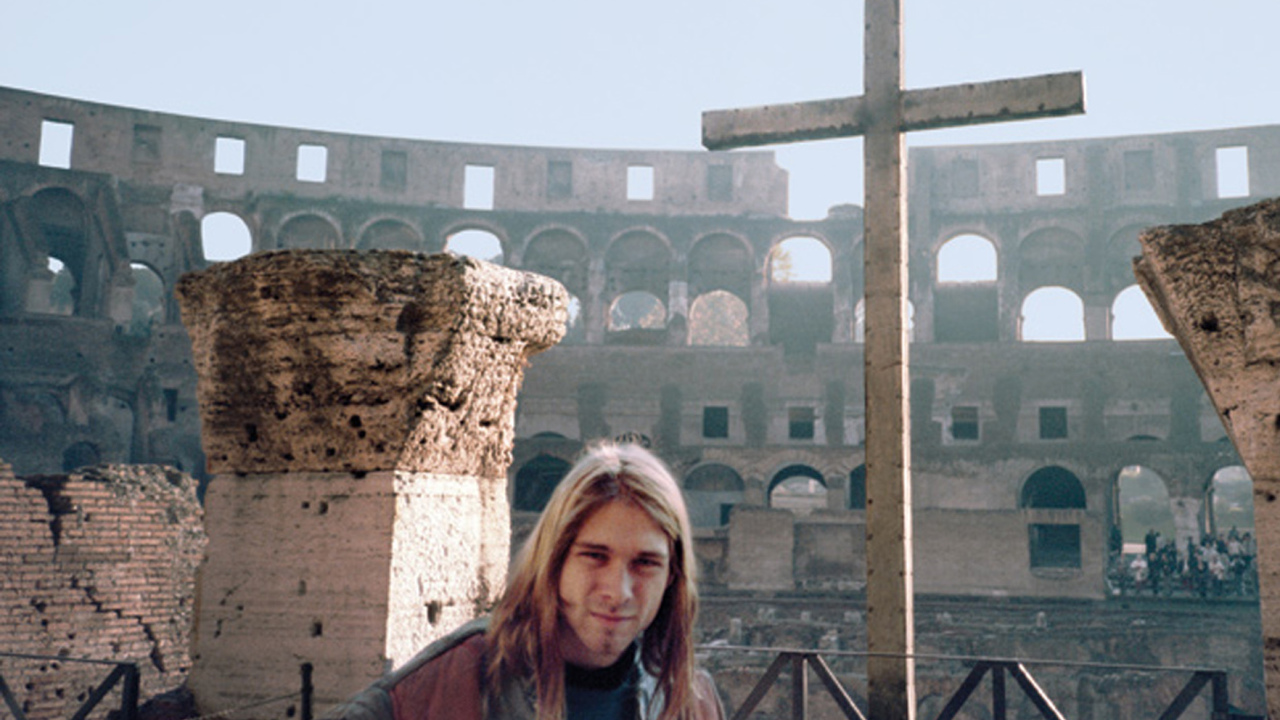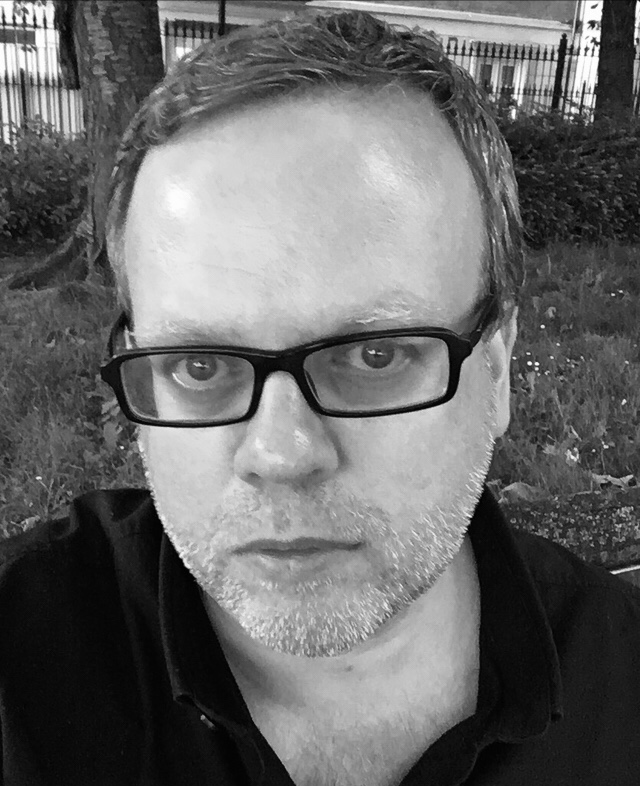On this day in 1994 Kurt Cobain was found dead at his home in Seattle. Twenty years on, the man who signed Nirvana to their first record deal remembers his “sensitive” late friend and Nirvana's breakthrough European tour.
You first saw Nirvana play live in April 1988: what did you make of the band?
“They were young and raw and nervous and they barely moved onstage. But then they didn’t have much of an audience to perform to – there was only the doorman, the bartender, Jon (Poneman, Pavitt’s partner at Sub Pop) and myself at the Central Tavern that night. Their best song back then was probably their cover of the Shocking Blue’s Love Buzz, which of course became their first Sub Pop single, but we could see they had potential. And Kurt had a great voice. The charisma and star quality would come later.”
Your new book Experiencing Nirvana: Grunge In Europe, 1989 documents Nirvana’s 1989 Heavier Than Heaven tour with Tad and shows a side of a young Nirvana that very few people got to see. The photos in the book are very obviously the work of an untutored eye.
“That’d be entirely fair to say! I just riffed and improvised, shooting photos over my head, or from my hip, and people rarely had a chance to pose for the images, so my photos are very intimate. And so even though they’re amateur photos, they bring a different dimension to the Nirvana story. Back then, before digital cameras, film was expensive to process, so bands would go out on tour for six weeks and maybe shoot one roll of film. I think I spent $500 processing my pictures from that trip which was more than my return flight from the US to London cost!”
That tour was previewed with a cover story on Tad and Nirvana in Sounds magazine: it’s funny now to think that Tad were the main image…
“Yeah, I imagine it was probably something of a coin toss to decide who got the bigger photo on the cover: at the time both bands were of kinda equal stature, but Tad was maybe more of a colourful character, so maybe that’s why he got the larger image. But, nonetheless, that was Nirvana’s first ever magazine ever cover. The Rocket in Seattle put them on the cover a few weeks later, but that Sounds cover was key to pushing their name internationally.”
Several posthumous Nirvana biographies claim that Kurt was pretty pissed off with the ‘redneck rocker’ image that was cultivated for him by Sub Pop in the band’s early days. Is that how you remember it at the time though?
“Well, Kurt was certainly a very intelligent and sensitive individual, and of course the label helped emphasise stories that would grab people’s attention, so with the town they grew up in being a redneck logging town in the middle of nowhere we did try to underscore that. And when Kurt talked to the British press in particular back then, he did tend to play up that angle. So, he kinda played both sides: there were times he dismissed that characterisation and there were times he used that exaggeration to his advantage to get people to notice. Once you have someone’s attention it’s easier to convince them of your sensitivity and intelligence!”
As your own book documents, you and Jonathan joined up with the Heavier Than Heaven tour in Rome in November 1989, some five weeks into the tour. Nirvana in particular were almost at breaking point I understand…
“Well, we originally weren’t going to go to Rome, we’d just planned to go to London for the LameFest show we’d booked into the Astoria for Mudhoney, Nirvana and Tad, to shake a few hands and buy everybody a beer and hopefully get the label some press. Mudhoney were the label’s golden boys at the time. They’d just done a split single with Sonic Youth and there was a genuine buzz on them in Europe already: there’s a photo in the book of the marquee outside the Astoria for the Lamefest show and it only mentions Mudhoney, it doesn’t even list the other two bands. But we had been told that Kurt was suffering from nervous exhaustion and we were really concerned about his mental health and that’s why we went to Rome. Kurt was sensitive, and because he was sensitive he was a little fragile. And he did have a nervous breakdown onstage that night, no doubt about it: he smashed his last guitar, climbed the PA stack and threatened to jump, destroyed the house mics and then announced to us that the band was over. And this all happened within half an hour. I think we got to him at a key juncture where we were able to help resuscitate his spirits and take him around Rome on a day off to eat some good food and just chill out, which he definitely needed because he was losing it. We knew that this upcoming show in London was going to be the show of his career – the British press is and was the most influential music press in the world and getting Kurt in front of them was key to their success – and there’s a chance he wouldn’t have made it to London if we hadn’t arrived in Rome. Sub Pop then was a mom and pop operation and we were genuinely trying to take care of our friends.
Depending on who you believe, Nirvana’s December 3, 1989 LameFest show was either the moment that set them on the path to superstardom or an unmitigated disaster: what’s your memory of the night?
“It was a great show, it was amazing. I’ve heard people say it was horrible, but I was there, it just totally went off. When you see the photos of that night, with audience member after audience member jumping off the stage, the proof is there in the images. They completely raged it. There’s a couple of songs from that show on the band’s ‘Live From The Muddy Banks…’ live album and they both sound incredible, so the audio proof is there too alongside my eyewitness testimony.”
You’ve included NME photographer Steve Double’s photographs of that show in the book and they serve as a great visual metaphor for the change in the band’s fortunes: your shots show the band raw and vulnerable and ordinary and then there’s this blinding flash of light and suddenly everything comes into focus and in those photos these scrawny kids look like rock stars.
“You know that is a beautiful insight and that’s one of the keys to why this book is really very interesting. Because it’s really a study in the power of media. Here you’ve got these guys bumbling around looking like normal folks, but why do you think we tried to get them to London? Because once you get them in front of professional writers and professional photographers, all of a sudden they become larger than life and that’s the whole point. So when NME then says ‘Nirvana are Sub Pop’s answer to The Beatles’ suddenly they’re not just rednecks from an obscure logging town, all of sudden they’re world class rock stars. All in the stroke of a pen. The whole game is ‘Can you create something that’s mythic and larger than life?’ because that’s what captivates people, and with the right photography, the right writing and a genuinely talented band, you can create something that feels more special than the average person on the street.”
You must have been deluged with offers to write a book about Kurt in the years following his death: so why put out Experiencing Nirvana now.
“Well, first of all, I had a tremendous sense of loss when we lost Kurt, and to be honest I’d also become disenchanted with the increasingly corporate nature and vibe of the whole indie-rock scene: after Nevermind every garage band wanted to become millionaires. So I basically retreated: I left Sub Pop and I moved to a remote island for 17 years and I really didn’t want to think about this stuff anymore. But, enough time has gone by that I felt it was time to share some stories. There’s been a lot of revisionist writing on Nirvana since Kurt’s death, and a lot of misconceptions enshrined as fact, and it felt like the right time to tell my stories.”
By coincidence, the anniversary of the week that you first saw Nirvana is also the week the band are being inducted into the Rock n Roll Hall of Fame: do you view that as a validation of everything they did or is that side of the industry something that holds no interest for you?
“Well, 20 years ago I wouldn’t really have cared, but at this point in my life I can look at that and go ‘Yeah, they damn well deserve to be in there!’ They were an incredibly important band: more than just artists and entertainers they were revolutionaries in a way. They are very historically significant. They proved that an outsider band could challenge the system on its own terms and that does not happen very often. They stayed true to their art and kept their integrity and their outspokeness and I think that’s why they still resonate so strongly with people. The Hall of Fame is a mainstream validation of that and I think a lot of people appreciate it.”
Bruce Pavitt’s book Experiencing Nirvana: Grunge In Europe, 1989, is out now through Bazillion Points.

